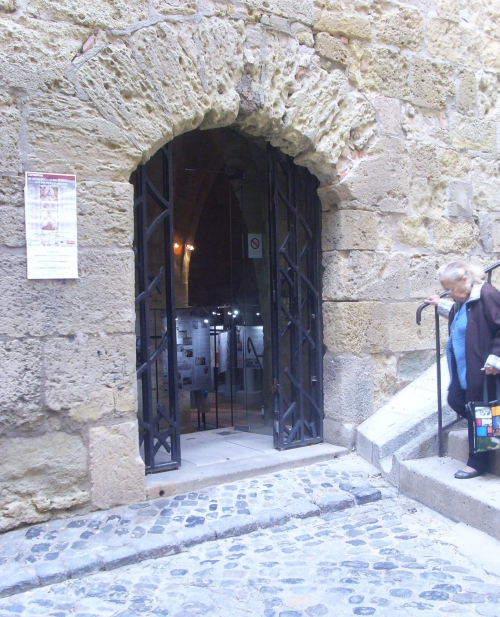VIA DOMITIA Clos de la Lombarde 40 years
Great October 2013
We met as usual in the Salle des Synods for a "conference" to start the celebrations of forty years of excavations at the Narbonne site called Le Clos de La Lombarde. An amateur archeologist, a schoolteacher called Raymond Sabrie, got permission to excavate the site under the umbrella of a formal archeology group and the work, with the team he collected, never stopped for forty years.
An incredible man, he was the only one with a dry eye when he gave his speech! He said: "When I was young an old Occitan man gave me some advice. Decide what you want to do with your life and then do it, with all your heart and all your strength. So that's what I did."
Then a young lady gave us a talk about the early Christian churches of France. The one at Clos de la Lombarde was built about 350AD and claims to be the very first, but there are other early Constantine, or Byzantine, churches, so called because they were among the first after Constantine ratified Roman Christianity as the state religion in 325AD. At the time Gaul was part of the Roman Empire.
The stone sepulchres were found beneath the floor of the church; this is where the important people were buried. There was also a baptismal pool.
It's known that Christianity was preached in private houses and in the open air and countryside around Narbonne from about 50AD when St. Paul Serge came to the region. Christianity was one cult among the many Roman and Celtic cults until 325AD, hence there were no church buildings.

The exhibition was held in the Salle du Pilier, late 15th century, on the left before you go up the steps to the Cathedral of Narbonne.

As well as the information panels with their pictures of incredible finds, mosaics and frescos, were items reflecting the everyday life of these Roman aristocrats in Roman Narbonne.
The reconstructed mosaics and frescoes were the result of hours of painstaking work. The fragments were collected and reconstructed and can now be seen in the Archeological Museum of Narbonne. People were particularly fascinated by the design of Apollo harnessing his horses before chasing the sun. Originally, this had been painted as though the viewer was looking through the window of the villa at the scene.
The naked god who flew too close to the sun . . .
I have always been interested in the history of everyday life; here's what the ladies of the day wore.


The public came in their hundreds, it was gratifying they were so interested, I spoke to people from all over the world. The expo was open for three weeks and every other day Nicole and myself went along to lend a hand and to explain the exhibits in several languages. Well, Narbonne IS the largest town in the department of Aude and it WAS the capital of Roman Gaul for three hundred years.
Inscrivez-vous au blog
Soyez prévenu par email des prochaines mises à jour
Rejoignez les 16 autres membres







